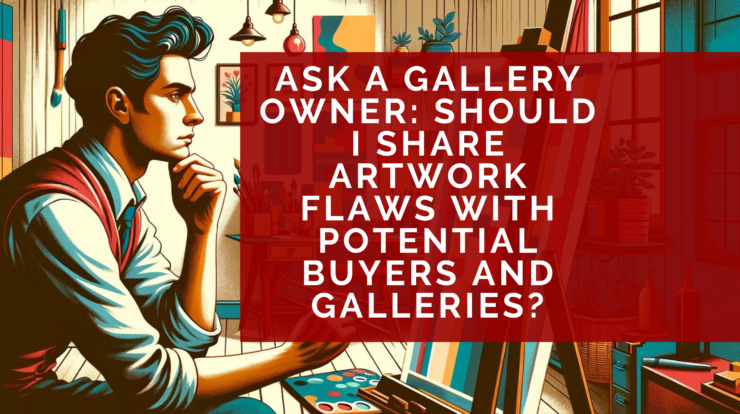
Recently, I had a chat with an artist about a fascinating question: should artists call attention to the imperfections in their work when talking to potential buyers or galleries? This conversation peeled back layers on much larger themes, like how artists see themselves and the importance of accepting imperfections in their creative journey. It’s a topic that hits home for many in the art world, shedding light on the delicate balance artists maintain between critiquing their own work and expressing themselves freely.
The Illusion of Perfection
Chasing perfection might seem like a worthy aim, but it can actually get in the way of being creative. Art is deeply human, full of those little imperfections and unique touches that make it special. These aren’t just errors; they’re essential parts that add character and richness to a piece. They show the artist’s touch, the choices they made, and how naturally the art came to life, all of which tell us there’s a personal story behind every work of art.
 Perception versus Reception
Perception versus Reception
Artists, being intimately familiar with their own work, can be overly critical of their creations. What may be considered a flaw in the eyes of the creator could go unnoticed by the viewer or, more interestingly, might be seen as a compelling feature that adds to the artwork’s overall impact. This disparity underscores the subjective nature of art and suggests that beauty and value often lie in the unpredictability of individual perception.
The Authenticity of Imperfection
Imperfections in art mark it as genuine, setting apart the handmade from the digitally perfect world we live in. Those little quirks and irregularities in each piece tell the story of the artist’s journey, adding character and vibrancy that no machine could ever mimic. Far from being flaws, these imperfections enrich the story behind the artwork, giving us a peek into the artist’s creative world and the emotions poured into each creation.
Engagement over Explanation
When you show your art, it’s more about sparking a connection than explaining away any so-called flaws. Letting people find their own meaning in your work invites a deeper, more personal experience. This way, you respect the viewer’s take on your art and help them enjoy it on a more profound level, without letting your own critical thoughts get in the way.
Distinguishing “Imperfections” from Damage
It’s essential to distinguish between the charming “imperfections” that lend art its uniqueness and actual damage to a piece. The former can enhance a work’s appeal by adding depth and authenticity, whereas the latter detracts from its value and appearance. Damage, unlike natural imperfections, indicates harm that compromises the artwork’s integrity or presentation. In such instances, the piece should be removed from display and repaired if possible. If it’s beyond repair, it may need to be permanently removed from the collection.
Embracing the Authenticity of Imperfection
Talking about imperfections in your art goes beyond just dealing with technical glitches. It’s really about diving deep into what creativity means to you. As an artist, it’s important to see those unique quirks in your work not as mistakes, but as essential pieces that bring depth and genuineness to your art. When you start to embrace and celebrate these qualities, you’re sharing something truly authentic with the world. Your art then becomes a powerful expression of human experience, touching on real truth and beauty in its rawest form.
I’m curious how you navigate the imperfections in your artwork. Do you think sharing these details with galleries and potential buyers influences their perception of your work? I welcome your insights and experiences on this topic. Please share in the comments below.
